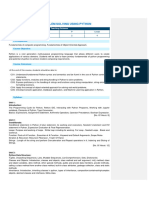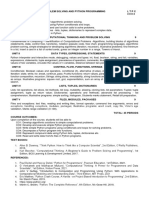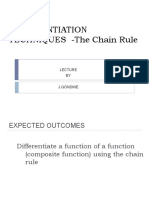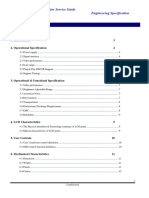0% found this document useful (0 votes)
137 views10 pagesBACSE101 - Problem Solvnig Using Python
The document outlines the course BACSE101, focusing on Problem Solving Using Python, which includes fundamentals of Python programming, algorithmic skills, and data handling techniques. It details course objectives, outcomes, modules covering various programming concepts, and includes a list of experiments for practical application. Additionally, it provides references, evaluation methods, and indicative experiments related to real-world problem solving using Python.
Uploaded by
vividh prabuCopyright
© © All Rights Reserved
We take content rights seriously. If you suspect this is your content, claim it here.
Available Formats
Download as PDF, TXT or read online on Scribd
0% found this document useful (0 votes)
137 views10 pagesBACSE101 - Problem Solvnig Using Python
The document outlines the course BACSE101, focusing on Problem Solving Using Python, which includes fundamentals of Python programming, algorithmic skills, and data handling techniques. It details course objectives, outcomes, modules covering various programming concepts, and includes a list of experiments for practical application. Additionally, it provides references, evaluation methods, and indicative experiments related to real-world problem solving using Python.
Uploaded by
vividh prabuCopyright
© © All Rights Reserved
We take content rights seriously. If you suspect this is your content, claim it here.
Available Formats
Download as PDF, TXT or read online on Scribd
/ 10






















































































